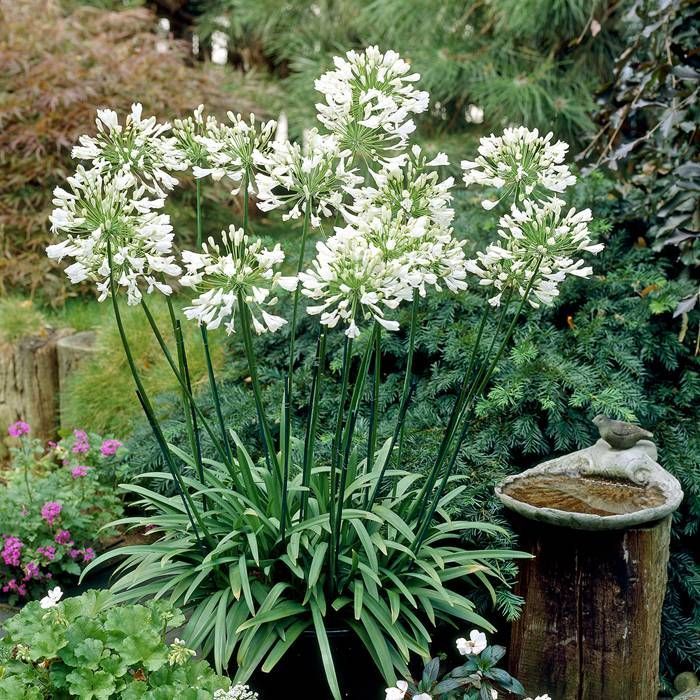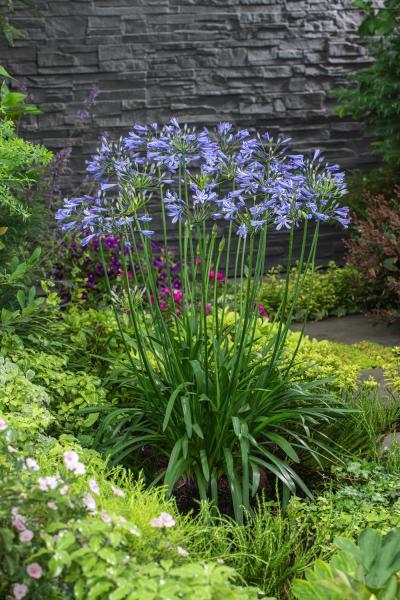Understanding the Art of Agapanthus Care: Important Steps for Healthy Growth and Lively Blossoms
In the realm of cultivation, the cultivation of agapanthus stands as a gratifying endeavor for those that look for to nurture these elegant blooming plants. With their striking blooms and graceful vegetation, agapanthus has caught the attention of garden enthusiasts worldwide. However, achieving optimal growth and vivid blossoms needs a nuanced technique that incorporates various important actions. From picking the appropriate selection to understanding pruning strategies, the journey towards cultivating flourishing agapanthus plants is multifaceted and holds the vital to unlocking the complete possibility of these agricultural treasures.

Selecting the Right Agapanthus Variety

When picking the appropriate Agapanthus selection for your garden, think about factors such as environment viability, flower shade, and growth behavior. Additionally, consider the climate in your area to ensure the Agapanthus range you choose can prosper in your particular problems. Understanding the growth behavior of various Agapanthus varieties is important for appropriate placement within your yard.
Ideal Growing Problems
Taking into consideration the optimum environmental requirements is vital for successful Agapanthus farming. Agapanthus plants are sensitive to cool temperature levels and ought to be safeguarded from frost during winter season months.
To guarantee healthy and balanced growth and vibrant blooms, plant Agapanthus bulbs at a depth of about 2-4 inches and area them 8-12 inches apart. Including natural issue, such as compost, to the soil can improve water drainage and fertility, advertising durable origin advancement. Mulching around the base of the plants aids preserve dampness and reduces weed development. Routine watering is vital, especially during the growing period, to keep the dirt consistently damp however not soaked.
Watering and Fertilizing Tips
Maintaining proper dampness degrees and providing vital nutrients are crucial elements in the care program for Agapanthus plants. It is important to strike a balance when it comes to watering Agapanthus. If overwatered, these plants choose consistently damp dirt but are vulnerable to root rot. During the expanding season, water deeply once a week, making sure the dirt is well-draining to avoid waterlogging. In hotter environments or throughout periods of dry spell, more constant watering might be needed to keep the soil evenly damp. Nevertheless, lower watering in the winter months to avoid waterlogged conditions.
Feeding Agapanthus is important for promoting healthy and balanced growth and prolific blooms. Apply a balanced fertilizer, such as a 10-10-10 formula, in the very early spring as brand-new development emerges. Repeat this application every 6-8 weeks throughout the growing season. Avoid extreme fertilization, as it can result in lavish foliage at the expenditure of blooms. Constantly follow the producer's guidelines for correct dilution and application approaches. By complying with these watering and fertilizing suggestions, you can ensure your Agapanthus plants grow and create dynamic, lasting blossoms.
Pruning Methods for Agapanthus
Trimming Agapanthus plants at the appropriate times and with appropriate methods is vital for preserving their health and wellness and advertising optimal growth and flowering. The ideal time to prune Agapanthus remains in late wintertime or early spring prior to new development arises. Begin by removing any type of dead or yellowing fallen leaves near the base of the plant. Cut them as close to the ground as possible without damaging the arising shoots.
Deadheading spent flowers can additionally reroute the plant's energy into creating more blooms rather than establishing seeds. If you desire to gather seeds check my site for proliferation, leave some flowers to mature and dry on the plant.
Remember to why not try these out make use of tidy, sharp tools to make exact cuts and decrease the threat of presenting illness. Agapanthus. Regular pruning will help keep your Agapanthus looking healthy and balanced and cool while ensuring a plentiful screen of gorgeous blossoms
Dealing With Typical Insects and Illness
After guaranteeing appropriate pruning strategies for Agapanthus, it is necessary to deal with typical bugs and conditions that can affect the health and vigor of these plants. One typical insect that affects Agapanthus is the Agapanthus gall midge.
Furthermore, Agapanthus plants can experience from origin rot if they are planted in improperly draining pipes soil. By being attentive and taking punctual action versus pests and diseases, you can assist your Agapanthus plants prosper and create vibrant blooms. Agapanthus.

Final Thought
To conclude, understanding the art of agapanthus treatment involves selecting the best variety, giving optimal planting problems, correct watering and feeding, suitable trimming strategies, and resolving common insects and illness. By complying with these necessary steps, you can make sure healthy development and vibrant blooms for your agapanthus plants. Bear in mind to frequently monitor and keep your plants to promote their overall health and durability.
To make sure healthy growth and lively blooms, plant Agapanthus light bulbs at a depth of about 2-4 inches and area them more helpful hints 8-12 inches apart. By following these watering and feeding ideas, you can guarantee your Agapanthus plants prosper and create lively, resilient flowers.
One typical pest that influences Agapanthus is the Agapanthus gall midget. In addition, Agapanthus plants can experience from origin rot if they are planted in poorly draining pipes soil. By adhering to these essential actions, you can ensure healthy development and lively blooms for your agapanthus plants.